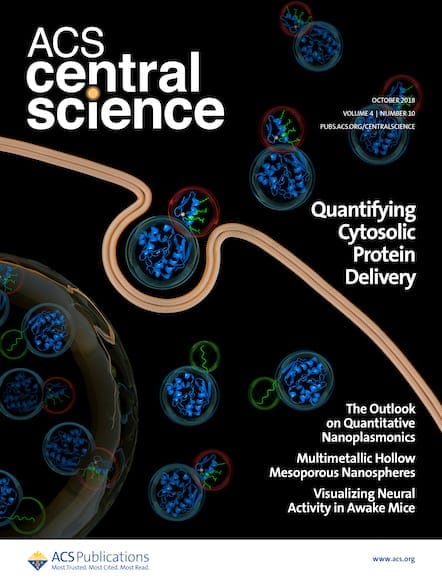In a fast-moving field like chemistry, quickly getting your work in front of an audience is essential to receiving the recognition it deserves. ACS Central Science understands the importance of getting exposure for the most compelling, important primary reports in chemistry research. That’s why this highly selective journal publishes all its articles open access and […]

In a fast-moving field like chemistry, quickly getting your work in front of an audience is essential to receiving the recognition it deserves. ACS Central Science understands the importance of getting exposure for the most compelling, important primary reports in chemistry research. That’s why this highly selective journal publishes all its articles open access and does so in a fraction of the time it takes other prestige journals to evaluate a manuscript.
Thanks to its close-knit editorial team, a cohort of outstanding reviewers, and expedient publishing processes, a paper submitted to ACS Central Science will go through peer-review, formatting, and copy-editing and publish online – on average – in a speedy 9.6 weeks.
But sometimes the team will receive a manuscript that needs to be published even more quickly, which is when the team’s efficiencies really come to the fore.
The article, “The CryoEM Method MicroED as a Powerful Tool for Small Molecule Structure Determination,” is authored by Jose A. Rodriguez, Hosea M. Nelson, and Tamir Gonen of the University of California, Los Angeles, as well as California Institute of Technology’s Brian M. Stoltz. The team wasted no time getting their work in front of an audience. They submitted it as a preprint to ChemRxiv on October 16. Less than 14 hours later, the preprint was available online.
As soon as their work was available to read, it began attracting attention. Blogs and news outlets such as C&EN began publishing articles discussing the method’s importance and its applications for the field.
Professional science writers weren’t the only ones who noticed. The preprint quickly joined the all-time top 5% of all research outputs scored by Altmetric, thanks to robust discussions on social media, including posts by some very high-profile voices.
“This is spectacular — could be totally game-changing for natural products structure elucidation, and perhaps someday a mainline technique for organic synthesis as routine as NMR,” ACS Central Science Editor-in-Chief, Professor Carolyn Bertozzi, wrote on Twitter.
It turned out that her enthusiasm was well placed since the paper had already been submitted to ACS Central Science. The paper was accepted and, thanks to exceptionally responsive reviewers and quick turn-around from the authors, fully peer-reviewed and published online just 16 days later on November 2. Since then, as the paper is free to read by anyone with an interest in the future of organic chemistry, it continues to generate discussion online.
